Organized Chaos: the Life of the Altar Boy
The various roles of altar servers in the Tridentine Rite
May 9, 2018
It is always nice to see altar servers performing their duties during Mass. They help the priest and help us focus on the ceremony. Behind the altar, though, the atmosphere is not as tranquil. Preparing for Mass can be quite the undertaking.
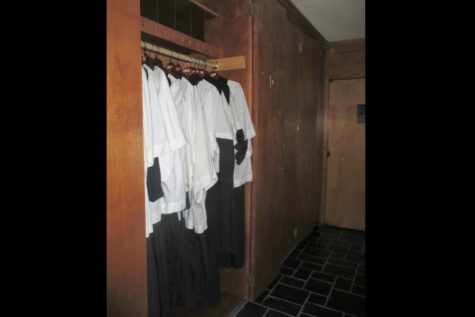
The altar boys at St. Joseph’s Church in Richmond, Virginia, have the system divided into distinct parts.
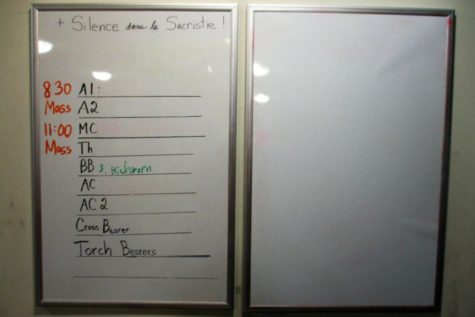
Each server is assigned a position for every Sunday of the month. To make things easier for everyone there is a distinct chain of command.
The Master of Ceremony, or M.C. does most of the work. During Mass he makes sure that everyone else knows what they are doing. Second in command is the Thurifer. He is responsible for the thurible and must keep the coals hot enough to burn the incense.
Next are the two Acolytes. They do the harder jobs like moving the book and helping assemble the chalice, and always work as a team.
After the acolytes are the Crucifer who carries the cross, the Boat Bearer who carries the incense, and the Torchbearers.
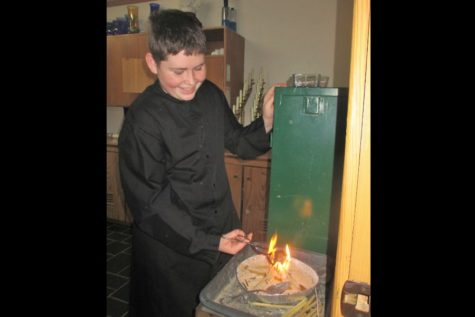
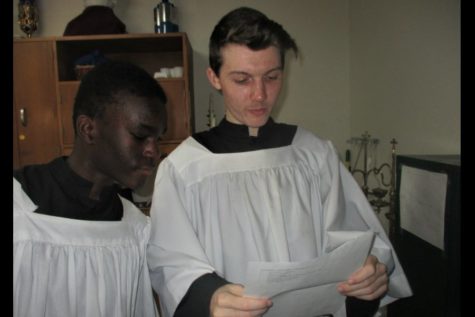
Besides leading the other servers during Mass, the M.C. also supervises preparation and cleanup. His job is, by far, the most complex. He must arrive in the sacristy and be in cassock and surplus at least thirty minutes before mass begins.
First, he checks to see if the Pastor or Parochial Vicar will be celebrating the Mass and if the corresponding chalice is assembled with purificator, paten, host, pall, chalice veil, burse and corporal.
Once the chalice is on the altar, he checks to see if the missal is set to the correct page, and, if there is an asperges or vidi aquam, he makes sure that the correct chasuble and manaple are on the sedalia, and that the aspergillum and prayer card are on the step.
Returning to the sacristy, he makes sure that the remaining vestments and cope are on the vesting bench.
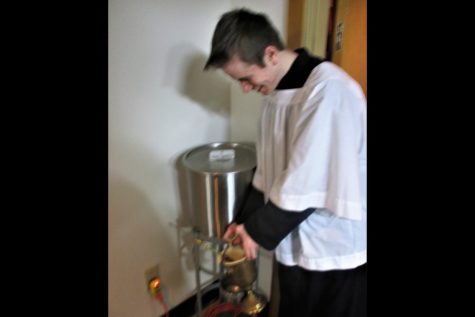
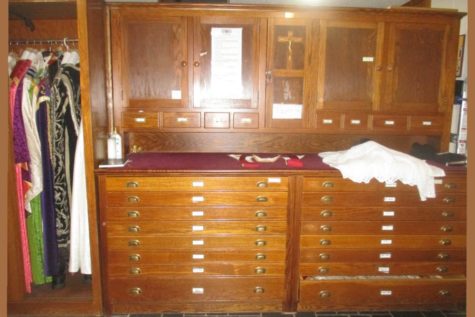
As the M.C. leaves the altar, the Acolytes make sure the altar candles are lit and the cruets are filled and on the credence table.
The Crucifer then has to make sure that the gate in the communion rail is open. The most important preparation is finding the tabernacle key and putting it on the altar.
The M.C. then has the sound system turned on and everything is ready.
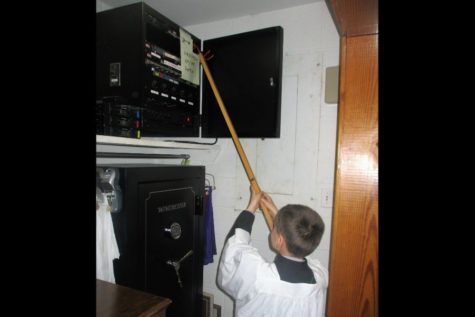
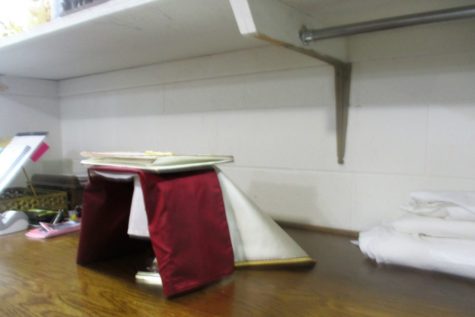
Even with all this preparation things can go wrong. Usually, it is very hard to predict what will occur. On one occasion a ringer from the altar bell came loose and rolled across the floor. One server had static cling in his cassock throughout Mass.
On very rare occasions servers may pass out due to heat. Often solving one problem can lead to a whole new category of others. To combat the heat, a fan was placed in the sanctuary pointed at the altar. Unfortunately, it was directly in front of where the Thurifer stands. As well as being in the way, it would suck the smoke in the back and blast it across the church. The fan has since been moved to the opposite side of the altar.
After Mass, everything that was set up must be put back.
The ashes in the thurible have to be dumped, the candles must be put out, and the cruets have to be washed, refilled, and put in the refrigerator. The aspergillum must be emptied into the holy water container and the cope must be put on a hanger; a two-man operation.
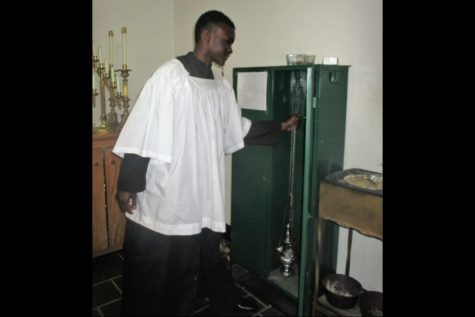
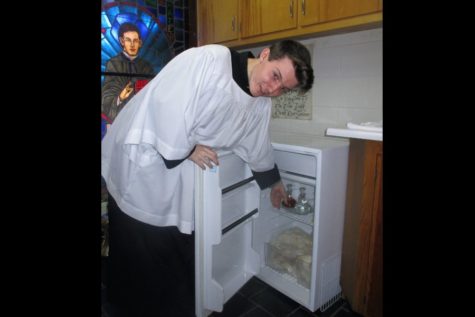
The altar boys at St. Joseph’s continue to improve their system. Once a month they have a large practice to keep everyone on the ball, and are constantly giving tips, organizing micro practices and brushing up on their Latin.
They work hard to ensure that the Old Rite is not lost.

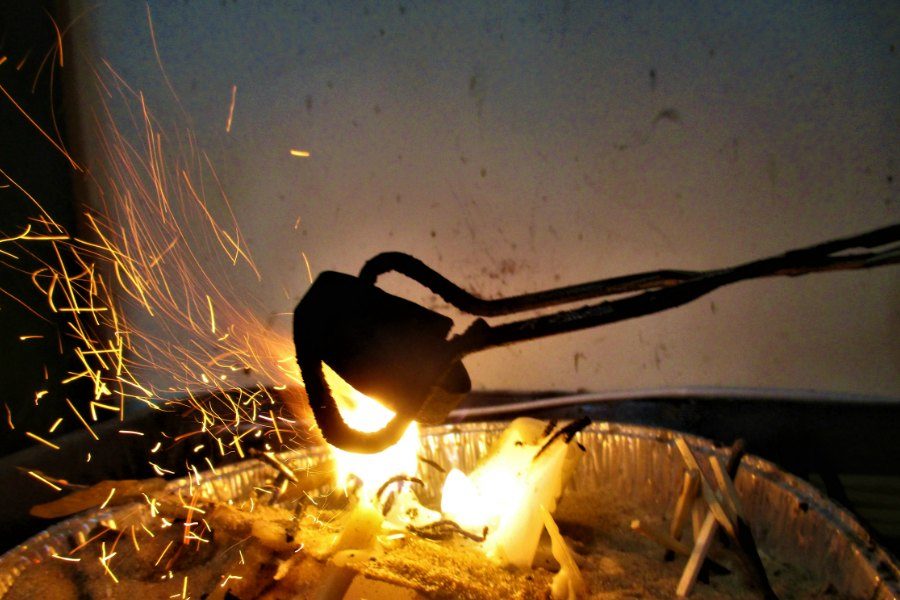












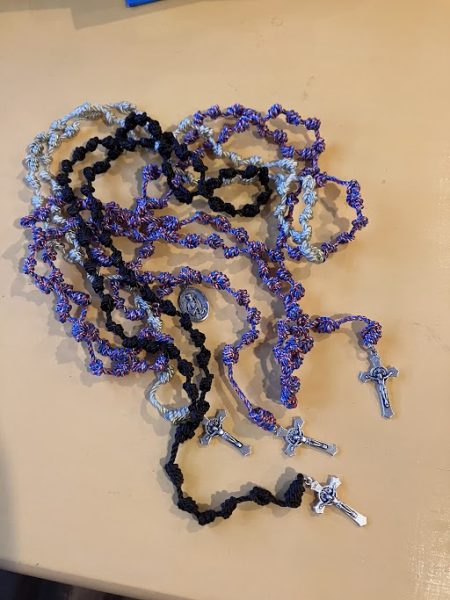



Sam Herbison • May 9, 2018 at 6:50 pm
Nice Article! On Mother’s Day I will serve first time as MC in the Old Rite! Chaos is right! From one Priest showing up 15 minutes after Holy Mass should have started to the Paschal Candle going out in the middle of the Lumen Chisti because one of the ushers forgot to turn off the fans!